In 1987, Congress officially designated March as Women’s History Month to commemorate, learn about, and reflect on women who have been history makers on their own terms. Chicago has had its fair share of influential women who have shaped not only the city, but the entire nation through their activism and work. In an effort to bring these narratives to the forefront, we’re proud to present this reader highlighting stories, exhibitions, and resources from the Chicago History Museum that elevate the stories of three of Chicago’s most notable women in the late nineteenth and early twentieth centuries—Lucy Parsons, Jane Addams, and Ida B. Wells-Barnett—in one convenient place.
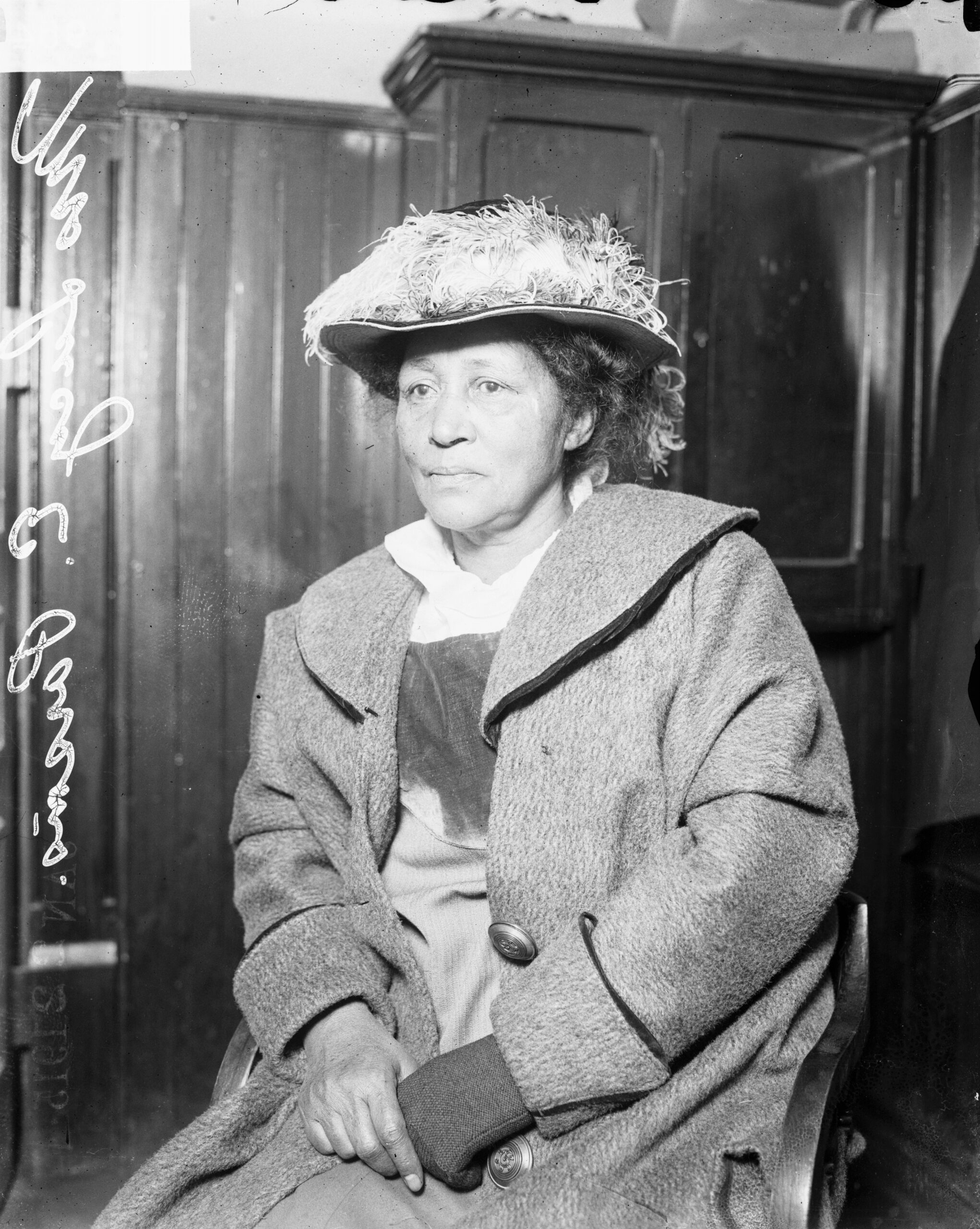
Portrait of Mrs. Lucy E. Parsons, arrested for rioting during an unemployment protest at Hull-House in Chicago, January 18, 1915. DN-0063954, Chicago Daily News collection, CHM
Lucy Parsons (1851–1942)
Supposedly once described by the Chicago Police Department as “more dangerous than a thousand rioters,” Lucy Eldine Gonzales Parsons was a labor activist and organizer, a renowned orator, and perhaps most controversially during her time, a person of mixed heritage who claimed Mexican and Indigenous ancestry. She was the widow of Albert Parsons, one of the men hanged for his role in the Haymarket Affair.
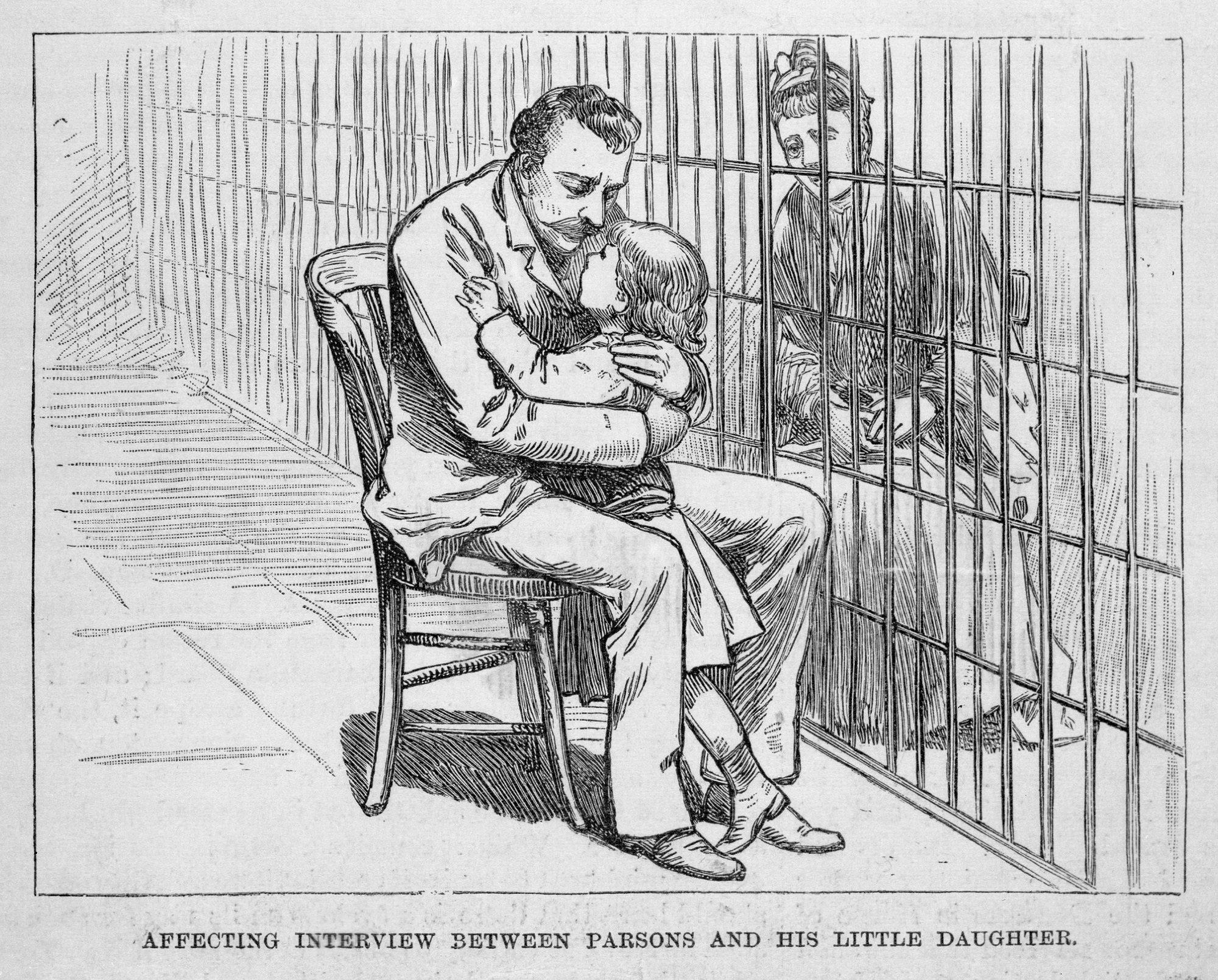
Sketch titled “Affecting interview between Parson’s and his little daughter” showing Albert Parsons hugging daughter in jail after Haymarket Affair arrest, Chicago, 1887. Published in Frank Leslie’s Illustrated Newspaper, November 12, 1887. CHM, ICHi-003672
Blog Post
CHM curatorial intern Brigid Kennedy’s blog post “A Fighter for Workers’ Rights” recounts the life of labor organizer Lucy Parsons.
The Dramas of Haymarket
This project highlights holdings from CHM’s collection related to the events before, during, and after the riots of 1886.
Chicago History magazine, vol. 15, no. 2 (summer 1986)
Parsons is mentioned numerous times in this issue highlighting her work as a publisher and radical organizer following the execution of the Haymarket martyrs. This entire issue is dedicated to the history and legacy of the Haymarket affair in the city.
Studs Terkel Radio Program about Labor History and Lucy Parsons
Listen as Studs Terkel talks with Irwin St. John Tucker about socialist causes in Chicago and historian Carolyn Ashbaugh about her book Lucy Parsons: An American Revolutionary.
Studs Terkel Radio Program about the Haymarket Affair
Studs Terkel talks with authors and historians Bill Adelman, Paul Avrich, Carolyn Ashbaugh, and Bill Neebe, the grandson of Haymarket defendant Oscar Neebe. The interviewees create a timeline of the events leading up to the Haymarket Affair including the German immigrants’ living situations, unions and strikes, and police brutality and corruption.
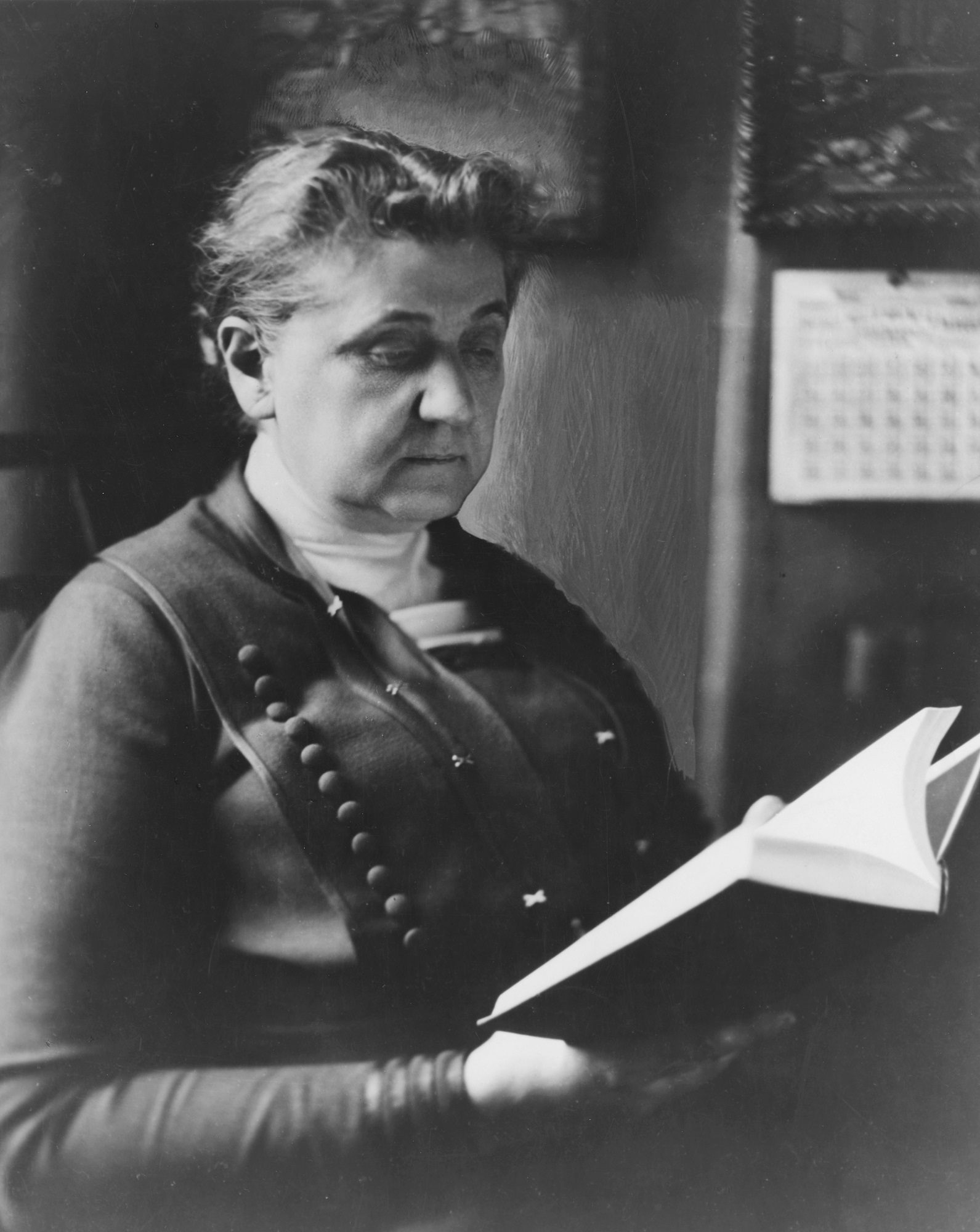
Portrait of Jane Addams, seated, reading a book, 1915. CHM, ICHi-026679
Jane Addams (1860–1935)
Jane Addams was a woman of many hats. In her role leading Hull-House, the Nobel Peace Prize winner and author was a social worker, housing activist, public health advocate, and the subject of an FBI investigation for so-called suspicious, and potentially treasonous, activities. Under her leadership, Hull-House became the most important settlement house in the United States.
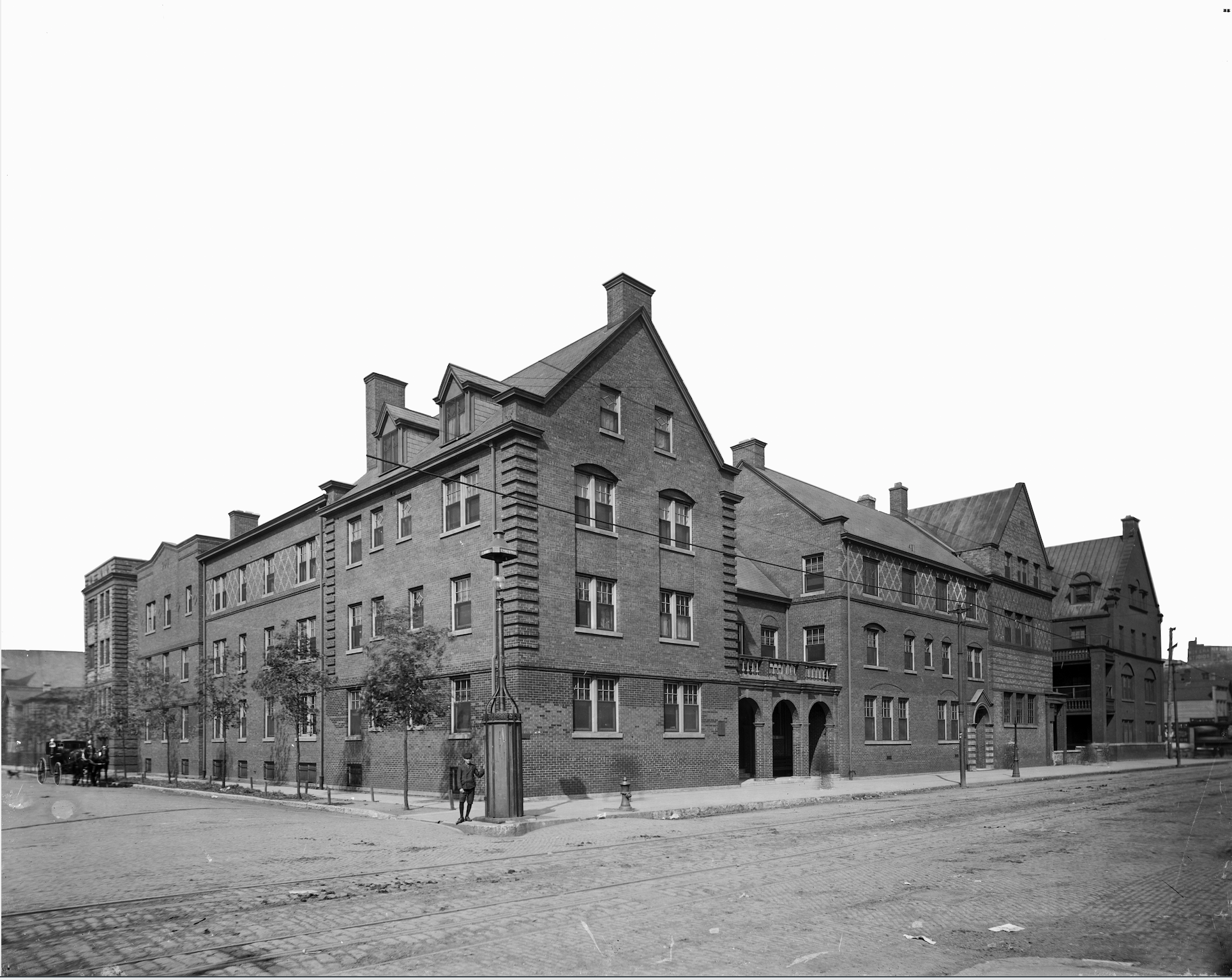
Exterior view of Hull-House, Chicago, c. 1905. CHM, ICHi-019228; Barnes-Crosby Company, photographer
Digital Chicago – Jane Addams: Chicago’s Pacifist
In this digital project led by Professor James J. Marquardt of Lake Forest College, learn about Jane Addams’s lesser-known international peace advocacy before, during, and after World War I.
Encyclopedia of Chicago – Hull-House
Read the Encyclopedia of Chicago entry on Hull-House, Chicago’s first and the nation’s most influential settlement house, which was established by Jane Addams and Ellen Gates Starr on the Near West Side on September 18, 1889. Also included is an excerpt from Addams’ memoir, Twenty Years at Hull-House.
Chicago History magazine, vol. 12, no. 4 (winter 1983‒84)
The essay “Hull-House as Women’s Space” by Helen Lefkowitz Horowitz presents an in-depth analysis of the importance that the architecture of Hull-House had for its residents.
Studs Terkel Interview with Jessie Binford
Jessie Binford was a social worker who worked closely with Jane Addams at Hull-House. Listen as she talks with Studs Terkel about Addams’s life, the creation of Hull-House and the associated buildings, and how deeply in need they were of the help.
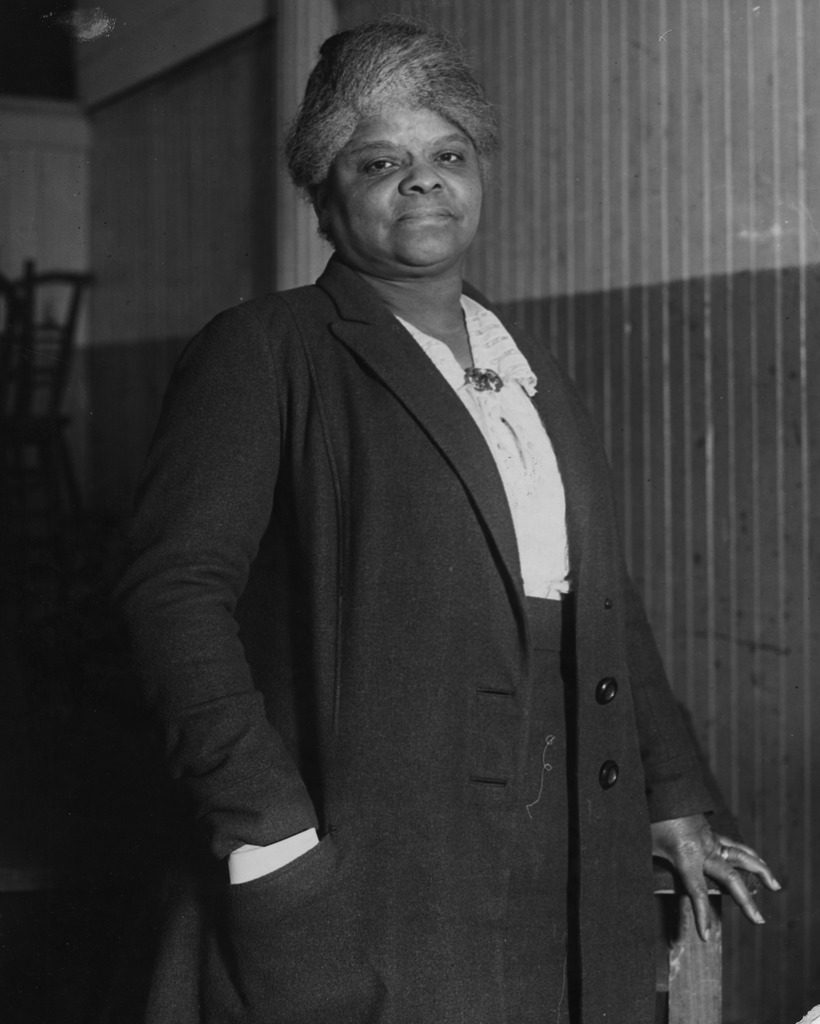
Portrait of Ida B. Wells-Barnett, 1920. CHM, ICHi-012867
Ida B. Wells-Barnett (1862–1931)
Born enslaved in Mississippi during the Civil War, Ida Bell Wells spent her career as a journalist protesting and investigating lynchings, which ultimately brought her to Chicago for her own safety. It would be here that she would take her activism to a global stage, speaking to audiences abroad about the horrors of the Black experience in America. At home, she continued her work as a reporter and used influence to lobby for women’s rights issues, especially for non-white women.
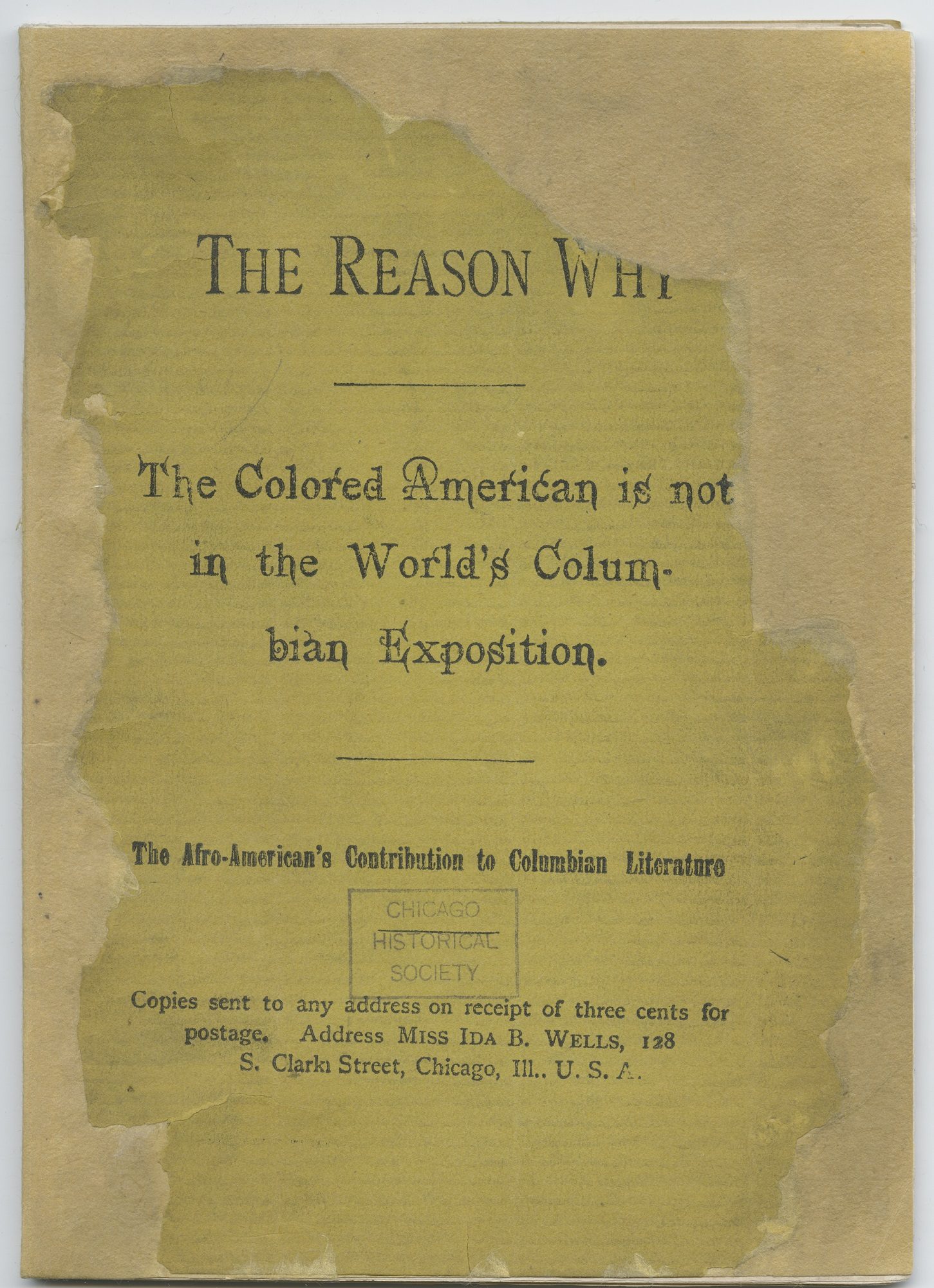
Cover of the booklet The Reason Why the Colored American is not in the World’s Columbian Exposition: The Afro-American’s Contribution to Columbian Literature, by Ida B. Wells, published in Chicago, 1893. CHM, ICHi-040939
Democracy Limited: Chicago Women and the Vote
As one of the staunchest defenders of democracy during her time, the multifaceted story of Ida B. Wells-Barnett is present in a number of the modules that make up this online experience about women’s activism in Chicago to secure the right to vote—and beyond.
The Voids Project Zine
As a supplement to Democracy Limited, this zine was put together by a group of teens from across Chicagoland to document the social and organizing work of prominent Black women in Chicago, including Ida B. Wells-Barnett, and the places they supported.
Chicago History magazine, vol. 25, no. 3 (fall 1996)
The essay “The Brotherhood” by Beth Tompkins Bates chronicles the early work in organizing the Brotherhood of Sleeping Car Porters. This organization drew on the efforts of many of Chicago’s women social activists, such as Irene McCoy Gaines, Mary McDowell, and Ida B. Wells-Barnett.
Studs Terkel Interview with Alfreda Wells
Listen as journalist Studs Terkel speaks with Alfreda Wells, the youngest child of Ida B. Wells-Barnett, about her mother’s life and work as an investigative journalist and strong champion of civil and women’s rights.
Additional Resources
Beyond Parsons, Addams, and Wells-Barnett, Chicago history is full of women who made history their own.
Walking Tour | Democracy Limited – Chicago Women & the Vote
Go at your own pace and see where history was made here in Chicago.
Facing Freedom in America Exhibition
The Votes for Women collection contains a number of primary source materials that help interpret the contributions and leadership of Chicago women to a number of struggles in the fight for equality and suffrage.
CHM Blog – Women’s History
Explore the “women’s history” tag on CHM’s blog to read more stories of local women who made history.